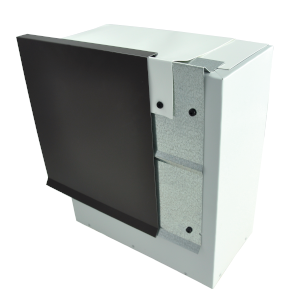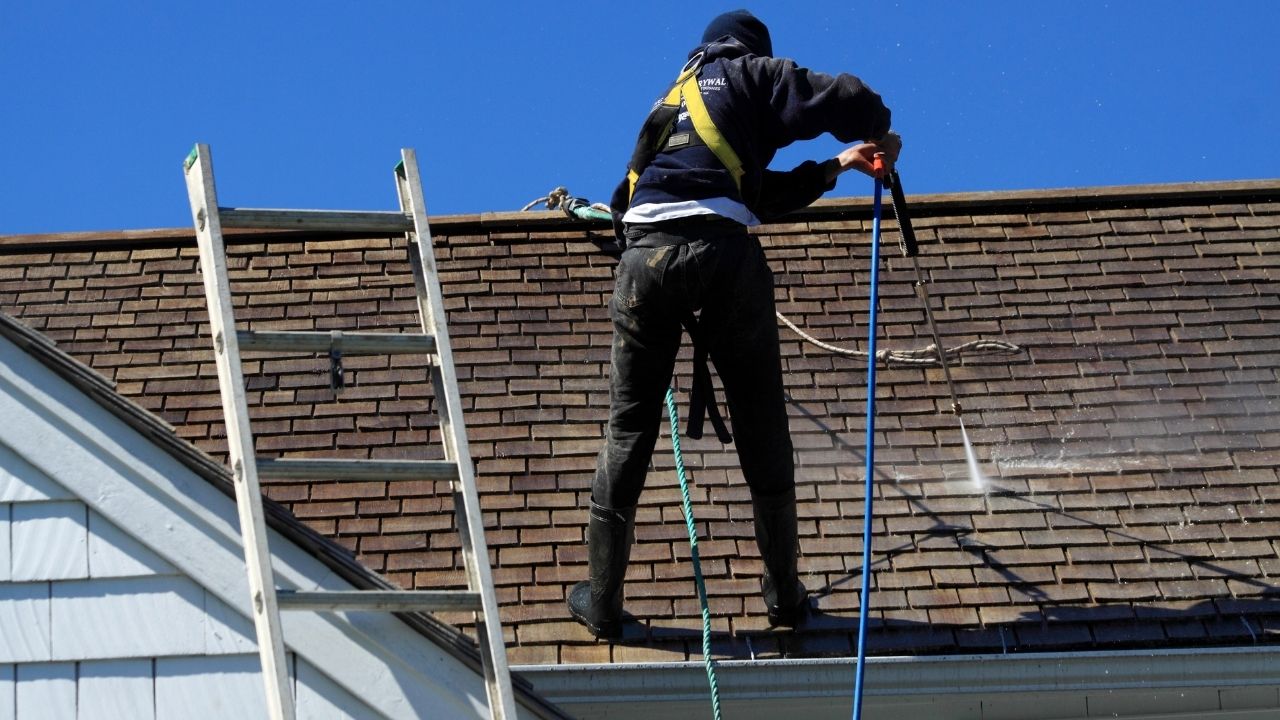
There are many roofing drainage systems. A downspout is the most popular type of drainage system. It takes water away form scuppers and directs them to the ground. Cast iron is a common material for these drainage systems. They are strong and durable. A protective cover is also included to keep debris from getting in. Cast iron is costly and requires constant maintenance. Polyvinyl Chloride (PVC), drainage system are far more cost-effective and flexible.
There are three basic types in roof drainage systems. A common one is a RD-300-AC roofing drain, which features a highly reliable compression seal to minimize the risk of leakage. Another type of roofing drainage system is an RD-300-AC. This drain system comes with a domed strainer, which can be adjustable from one inch to three-and-a-half inches in diameter. These drainage systems, made from epoxy-coated cast metal, feature a selflocking polyethylene dome.

There are two types. Positive roof drainage systems use siphoning for drainage. These systems are most commonly found on flat commercial roofs. These drains also require less drains than other roof drains. These systems are also more affordable than others and much easier to install. However, they typically need more maintenance than other types of roofing drainage systems. This type drain system does require fewer sloping roofs than other systems.
A primary roof drain is connected by a pipe to the other parts. It is responsible for transporting rainwater to ground or other disposal areas. These drainage systems are known as overflows. Roof drains must always have a 2-inch water dam. This can be internal or external. They are best suited for situations in which a lot of water is on a roof. If the primary roof drainage system fails, a second one will be needed.
There are many types to choose from when it comes to roofing drains. Some are hidden, while others are visible. If you plan to install an inner roof drainage system, you must be very careful to install it properly. The best way to avoid flooding your home is to choose a lower channel over a higher one. These are more efficient but can cause flooding if the inner roof drain is placed on the inside.

Scuppers are the most widely used type of roof drain. They are installed on the edge of a roof and are designed to prevent water from pooling on the roof. These gutters are made of sheet metal and usually come with a gutter or downspout. In some cases they can be attached directly or secured with an underdeck clamp. So, the right roofing drain depends on the location. It should be located at the parapet's center, with the slope toward the building's outside wall.
FAQ
How much does it cost for a house to be renovated?
Renovations are usually between $5,000 and $50,000. Most homeowners spend between $10,000-$20,000 on renovations.
Are you able to live in a renovated house?
Yes, I am able to live in a house and renovate it.
Are you able to live in your house while the renovations are ongoing? The time taken to complete the work will impact the answer. If the renovation takes less than two months, then you can live in your house while it is being built. If the renovation takes longer than two weeks, however, you can't live in your home during the construction.
It is important that you do not live in your home during major construction. There is also the possibility of dust and noise pollution from the heavy machinery at the job site.
This is especially true if your house has multiple stories. In this case, the sound and vibration created by the construction workers might cause severe damage to your property and its contents.
As I mentioned before, while your home is being remodeled, you'll have to manage the inconveniences of living in temporary shelters. This means you won’t have the same amenities as your own home.
While your dryer and washing machine are being repaired, you won't be able use them. It will be difficult to bear the smell of paint fumes as well the sounds that workers make.
All these things can lead to anxiety and stress in your family. To avoid becoming overwhelmed by these situations, it's important to plan ahead.
Research is key when you are considering renovating your home. It will save you money and help you avoid costly mistakes.
You can also consider professional advice from a trusted contractor to ensure smooth running of your project.
What room should I remodel first?
The heart and soul of any home is the kitchen. It is where you spend your most time cooking, entertaining, eating, and relaxing. So if you are looking for ways to make your kitchen more functional and attractive, start there!
Bathrooms are an important part any home. You can relax in your bathroom and take care of daily tasks like bathing, brushing your teeth and shaving. These rooms can be made more functional and attractive by installing storage space, a shower, or replacing older fixtures with newer models.
Is it better to hire a general contractor or a subcontractor?
It is more expensive to hire a general contractor than to subcontract. A general contractor has many employees, so they often charge their clients a lot of money for labor costs. A subcontractor hires only one employee so they charge less per an hour.
Statistics
- Rather, allot 10% to 15% for a contingency fund to pay for unexpected construction issues. (kiplinger.com)
- Most lenders will lend you up to 75% or 80% of the appraised value of your home, but some will go higher. (kiplinger.com)
- A final payment of, say, 5% to 10% will be due when the space is livable and usable (your contract probably will say "substantial completion"). (kiplinger.com)
- ‘The potential added value of a loft conversion, which could create an extra bedroom and ensuite, could be as much as 20 per cent and 15 per cent for a garage conversion.' (realhomes.com)
- Design-builders may ask for a down payment of up to 25% or 33% of the job cost, says the NARI. (kiplinger.com)
External Links
How To
How to renovate an older house
Let's start by deciding what type of renovations you would like to undertake. This could include everything from simply updating your kitchen appliances to completely transforming the whole house into something new.
Once you have decided what type of renovations you want to undertake, the next step is to determine how much money it will cost. You might find that you don't actually have enough funds to cover the full cost of the entire project. If this is true, you will need to make hard decisions about which areas you can afford to fix and which ones you won't.
There are many things to remember before you begin work if you have decided to do renovations. The first thing to do is ensure you get the necessary permits. You might also need to check whether you need planning permission for certain types or work. To add extensions to your home or make other changes, you might need building consent.
Before you start working on the house, it's always best to check the local council website to see if they require any additional permits. It is also important to check whether planning permission is required for every part of the house you are renovating. If you plan to do major renovations, such as replacing a roof, it is advisable to consult your insurance provider to ensure that you have sufficient coverage.
The next step after obtaining all necessary permits is to pick the right materials and tools for the job. There are many options so make sure you take your time and research each one thoroughly. Some of the most common items that people use during their renovation projects include paint, wallpaper paste, flooring, tiles, carpets, insulation, fencing, doors, windows, lighting, plumbing, heating systems, electrical wiring, plasterboard, timber, concrete, bricks, tiling, mirrors, sinks, taps, toilets, washing machines, ovens, refrigerators, microwaves, dishwashers, vacuum cleaners, carpet cleaning equipment, air conditioning units, fireplaces, chimneys, and even garden furniture!
When choosing these items, remember to look at the quality of the product. Poor quality products can be expensive and last for a very short time. Good quality products, however, will last longer and provide more value for your money. You should only buy what you need when purchasing anything. It is important not to buy too much, as you may end up wasting valuable resources or having to throw out large quantities of material. Instead, try to purchase exactly what you need.
Once you've decided on the materials you want to use, you must plan where you'll keep them while you are working on the property. You might need storage space if you are renovating large areas of your house. Another option is to ask friends and family to help you move the items.